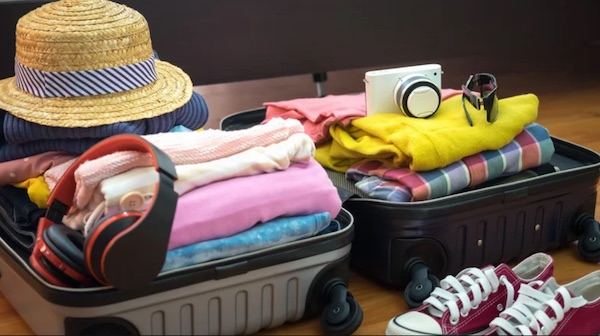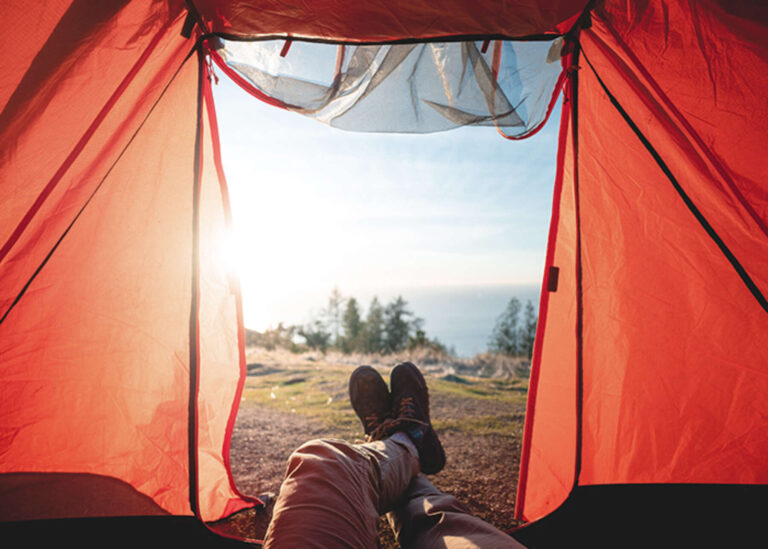Overcoming Jet Lag and Adjusting to a New Time Zone
Guide on overcoming jet lag and adjusting to a new time zone, providing comprehensive advice for minimizing the effects of long-distance travel.
Introduction
Traveling to far-off destinations is exciting: new cultures, delicious cuisines, and the promise of unforgettable adventures.
Whether attending a conference on another continent or finally going on that dream vacation, the thrill of discovering new places never gets old.
However, one major challenge can cast a shadow on all this excitement—jet lag.
What is Jet Lag?
Jet lag, also known as circadian rhythm disorder, occurs when your internal body clock is out of sync with the local Time of your destination.
If you’ve ever felt groggy, disoriented, or unable to sleep at night when traveling across multiple time zones, you’ve experienced the effects of jet lag. This phenomenon can affect anyone, regardless of age or travel experience.
While jet lag can’t always be avoided entirely, there are proven strategies to lessen its impact and help you adapt more quickly to your new surroundings.
What Do We Cover Here?
This blog is an extensive guide for understanding jet lag, why it happens, and what you can do to minimize its disruptive effects before, during, and after your trip.
The following sections delve into the science of your body’s internal clock, explore specific tactics for easing your way into a new time zone, and provide practical advice on everything from meal timing to effective sleep solutions.
When you reach the end of this post, you’ll be equipped with a thorough toolkit of tips and best practices to help ensure a smoother transition and set the stage for a more enjoyable journey.
From pre-travel preparations to smart post-arrival strategies, each tip aims to help you enjoy your destination more and spend less time nursing fatigue.
Whether you’re a frequent flyer or a first-time long-haul traveler, these insights can make the difference between dragging through your trip or making the most of every moment.
Let’s’ start by examining how jet lag works. Understanding the “why” is crucial to overcoming the “how”.
The Science of Jet Lag
Jet lag is intimately tied to your body’s circadian rhythms—24-hour cycles that regulate various biological processes, including hormone release, metabolism, and the sleep-wake cycle.
Think of your circadian rhythm as an internal clock that coordinates with environmental cues, most notably light, to tell your body when to be awake and when to rest.
When you travel across multiple time zones, your environment changes abruptly, but your internal clock remains aligned with your original schedule.
For example, there’s a five-hour difference if you live in New York and travel to London.
While Londoners might be winding down for bed at 10:00 PM, your body might still think it’s’ 5:00 PM.
This mismatch creates a phenomenon where you feel awake when you should be sleeping and tired during local daytime hours.
Key Hormones Involved
Melatonin, secreted primarily by the pineal gland in response to darkness, is one of the most essential hormones in regulating sleep.
Melatonin levels rise in the evening, prompting feelings of drowsiness, and drop again in the morning, helping you feel alert.
When you rapidly shift to a new time zone, melatonin production lags behind local nightfall, making it difficult to fall asleep at the local bedtime.
Common Symptoms
- Sleep Disturbances: Trouble falling or staying asleep; waking too early or feeling sleepy at inappropriate times.
- Daytime Fatigue: Persistent tiredness during the day or a feeling of sluggishness that’s hard to shake.
- Concentration and Mood Issues: Irritability, difficulty focusing on tasks, and occasional headaches.
- Gastrointestinal Discomfort: Changes in appetite and digestive issues because circadian rhythms govern the body’s digestion schedule.
The good news is that jet lag tends to be temporary. Most people fully adjust to a new time zone within a few days to a week.
However, you can significantly reduce its severity and duration by employing well-researched strategies and careful planning.
In the upcoming sections, we’ll discuss how the direction of travel and the number of time zones crossed can affect jet lag and then discuss specific approaches for mitigating it.
Understanding Circadian Rhythms
Before we discuss practical strategies, it’s’ helpful to examine your body’s internal clock, often called the “master clock.”
Located in the suprachiasmatic nucleus (SCN) of the hypothalamus in the brain, this master clock receives direct input from the eyes.
When light hits the retina, specialized cells send signals telling the SCN whether it’s’ day or night, adjusting your circadian rhythms accordingly.
Factors Influencing the Master Clock
- Natural Light: Sunlight is the most potent regulator of your circadian rhythm. Morning light, in particular, signals to your body that it’s’ Time to wake up, while darkness in the evening triggers melatonin production.
- Meal Times: Your body associates regular eating schedules with the local Time. Shifting mealtimes closer to the new time zone can help realign your metabolic rhythms.
- Physical Activity: Exercise also influences your sleep-wake cycle. Moderate physical activity can help reinforce daytime alertness and prepare you for nighttime rest.
- Social Interaction: Humans are social creatures, and spending Time with others typically happens during daytime hours. Regular interaction in the new local daytime helps your mind and body recognize it’s’ Time to be awake.
Why Circadian Rhythms Matter for Jet Lag
When you cross time zones, your internal clock doesn’t’ instantly reset. Instead, it gradually adjusts—depending on the number of time zones crossed, it can take several days to realign completely.
This is why travelers moving from the United States to Asia often experience more severe jet lag; an 8–12 hour shift means your master clock requires more Time to reset.
Moreover, because circadian rhythms govern not just your sleep-wake cycle but also hormone levels, body temperature, and even cognitive function, being out of sync can have ripple effects across your entire well-being.
This includes mood swings, reduced concentration, and physical fatigue, which can detract from your travel experience.
Understanding your master clock sets the stage for actionable strategies. Next, we’ll examine how the direction of your travel plays a crucial role in shaping your jet lag experience, followed by pre-travel steps you can take to lessen the blow.
The Impact of Travel Direction
Not all jet lag is created equal. Whether you’re flying east or west can affect how severely jet lag affects you, mainly because of how your circadian rhythm adjusts.
Traveling East (Losing Time)
When you travel east, you’re essentially moving your schedule forward. If you leave New York at 8:00 PM and arrive in London at 8:00 AM local Time the next day, your body still feels like it’s’ 3:00 AM.
You’ve’ lost five hours that you would typically use to rest and gradually transition from night to day. Research shows that traveling east tends to be harder on the body because it requires your internal clock to move ahead, forcing you to adopt an earlier bedtime and wake-up Time.
Traveling West (Gaining Time)
Heading west usually entails lengthening your day. For instance, flying from New York to Los Angeles moves the clock back three hours. In this scenario, you might arrive in Los Angeles when it’s’ still daylight, even though your body senses it’s’ later in the evening.
Adjusting to a later bedtime and wake-up Time is generally easier for most people, as the natural circadian cycle is slightly longer than 24 hours, making “extending” your day more manageable.
North-South vs. East-West
If your journey is primarily north-south—from New York to Buenos Aires—while the climate and culture might be vastly different, the time zone shift is minimal (only one or two hours, depending on daylight saving Time).
In such cases, jet lag is often less of a concern than a flight that covers more time zones.
Time Zones Crossed
Of course, the total number of time zones you cross also plays a direct role. Crossing three or fewer time zones might feel manageable, while journeys spanning eight or more time zones require a more robust strategy to adapt.
Regardless of your direction of travel, a proactive approach can soften the blow of jet lag.
In the following sections, we’ll cover strategies you can adopt before you board your flight and tips to implement during the flight itself and upon arrival.
Pre-Travel Strategies
Combating jet lag starts long before you settle into your airplane seat. Making gradual adjustments the days before your trip can ease your body into a smoother transition.
1. Gradual Bedtime Adjustments
- Shift in 15-30 Minute Increments: A week before departure, shift your bedtime by 15–30 minutes each day toward the local Time of your destination. If flying east, aim for an earlier bedtime; if heading west, try going to bed slightly later.
- Wake-Up Times: Similarly, adjust your morning wake-up Time. Gradually align your sleeping and waking cycles to what you’ll’ follow at your destination.
2. Adjust Meal Times
- New Time Zone Meal Schedule: Consider adjusting your mealtimes closer to those you’ll have at your destination. This will help your digestive system and metabolic processes start transitioning.
- Eating Light: When shifting mealtimes, keep your meals light and balanced. Overeating can disrupt sleep, and you want your body to adapt smoothly without additional strain.
3. Manage Stress and Build Buffer Days
- Relaxed Pre-Travel Timeline: Stress levels can intensify the impact of jet lag. Avoid last-minute packing marathons or overly tight deadlines. Stress hormones can adversely affect sleep quality, making your circadian rhythm more resistant to change.
- Buffer Days for Major Events: If you’re traveling for a crucial business meeting, important conference, or significant family event, consider arriving a day or two early. This gives you extra Time to rest, explore the new environment, and better align your internal clock.
4. Exercise Timing
- Morning vs. Evening Workouts: Consider morning exercise to encourage earlier bedtimes if traveling east. Conversely, evening workouts can help you stay awake longer if traveling west.
5. Strategic Caffeine Use
- Caffeine “Cut-Off”: Pay attention to your coffee or tea intake as you inch closer to your departure. Avoid excessive caffeine, especially later in the day, since it can interfere with your ability to fall asleep at your new, earlier bedtime (if traveling east).
By implementing these pre-travel adjustments, you’re giving your internal clock a head start. While it may feel like extra work, this approach can pay significant dividends once you land, often cutting down the severity and duration of jet lag.
Next, we’ll look at the steps you can take in transit.
During the Flight
Long-haul flights can be tiring and cramped, but your decisions on the plane can either help or hinder your eventual time zone adjustment.
Here are some guidelines to follow mid-flight to set yourself up for success upon landing.
1. Set Your Watch to Destination Time
- Mental Shift: As soon as you board, change your watch or phone clock to your destination’s Local Time. This mental shift helps you start thinking in the new time zone immediately.
- Begin Behavioral Adjustments: If it’s’ daytime at your destination, try to stay awake; if it’s’ nighttime, attempt to get some rest.
2. Stay Hydrated
- Water vs. Dehydrating Beverages: The air in airplane cabins is extremely dry, and dehydration can exacerbate jet lag symptoms. Drink plenty of water. Limit alcohol and caffeinated beverages, both of which can worsen dehydration and disrupt your sleep patterns.
- Electrolytes: On especially long flights, consider an electrolyte-rich drink or hydration tablet (low-sugar varieties) to replenish lost minerals.
3. Move Around
- In-seat exercises: To maintain circulation, rotate your ankles, flex and extend your feet, and do shoulder rolls.
- Walk the Aisles: If you can, get up every couple of hours to walk the aisles. This helps prevent stiffness and deep-vein thrombosis (DVT) and gives you a mini mental reset.
4. Optimize for Comfort and Sleep
- Neck Pillows, Eye Masks, and Earplugs: These simple tools make resting on the plane more comfortable and help block out ambient noise and light.
- Layer Clothing: Airplane cabins can be chilly or excessively warm. Wear layers to adjust your clothing for maximum comfort, crucial for restful sleep.
- Avoid Overeating: A large, heavy meal can make you uncomfortable and disrupt sleep. If you’re trying to sleep on the plane, a light meal or snack is less likely to interfere with rest.
5. Mindful Entertainment Choices
- Relaxing Content: If you want to sleep, choose calming music, white noise, or low-stimulus entertainment. Avoid action-packed or emotionally charged movies that might keep you overstimulated.
- Reading: A physical book or e-reader with the brightness turned down can be a soothing way to pass the time if you’re trying to stay awake when it’s daylight at your destination.
In-flight choices set the tone for how your body will feel upon arrival. Incorporating these habits can make a noticeable difference in how quickly you bounce back once you land. Our next section focuses on post-arrival strategies—some of the most critical steps in defeating jet lag happens once you finally reach your destination.
Upon Arrival
Congratulations, you’ve landed! Now, the real work of adjusting to your new time zone begins. These first few days at your destination are crucial for resetting your internal clock.
1. Embrace the Local Schedule
- Align Your Activities: As soon as possible, try to follow the local routine for meals and bedtime. Even if you feel tired at odd hours, resist the temptation to cave into your old time zone.
- Power Naps: If you must nap, limit it to 20–30 minutes. Long naps can keep you locked in your original time zone.
2. Get Exposure to Sunlight
- Morning Light for Eastbound Travel: If you’ve traveled east, seek natural light early in the day. This helps you wake up earlier.
- Afternoon/Evening Light for Westbound Travel: If traveling west, getting light later in the day helps you stay awake longer and shift your bedtime accordingly.
- Spend Time Outdoors: Even a short walk can help. Natural light is far more effective than indoor lighting for resetting your circadian rhythm.
3. Hydrate and Eat Light
- Continue Drinking Water: The body typically needs additional hydration after a long flight, mainly if you consumed alcohol or caffeinated beverages on the plane.
- Adapt Meal Times: Have meals at local breakfast, lunch, and dinner times. Even if you’re not hungry, eating a small snack can help signal your body about the new schedule.
4. Gradual Exercise
- Light Exercise the First Day: Consider walking, doing some yoga, or engaging in mild stretching. Vigorous exercise can be helpful but might be too demanding for your first day when your body is stressed from travel.
- Listen to Your Body: Once you’re more settled, add more intense workouts if they align with your usual routine.
5. Be Patient with Yourself
- Self-Care: Feeling tired, grumpy, or out of sorts is expected the first day or two after a considerable time zone shift. Try not to overbook yourself with strenuous activities. Ease into the new environment to avoid overwhelming your system.
- Avoid Sleeping Pills (Unless Prescribed): While some people resort to sleeping pills, it’s’ best to try natural realignment methods first. If you do use medication, consult a healthcare professional for advice.
With these post-arrival strategies, you’ll’ reinforce the transition to local Time. Consistency is key—sticking to your new schedule even when you feel tired at unexpected hours will help your body adapt quickly. Let’s now delve deeper into how what you eat and drink, and when, affects jet lag recovery.
The Role of Nutrition and Hydration
Food and beverages provide energy and send powerful signals to your body’s internal clock. By optimizing your diet before, during, and after your trip, you can support quicker circadian adaptation.
1. Timing Your Meals
- Meal Synchronization: As mentioned, eating meals aligned with the new local Time can help your body adjust. Having breakfast in the local morning hour, lunch midday, and dinner in the evening signals your body about wake and rest times.
- Light and Balanced: Heavy or fatty meals may cause sluggishness, especially when your digestive system is already out of sync. Aim for lean proteins, vegetables, whole grains, and fruits.
2. Avoiding Sleep Disrupters
- High Sugar: Sugary snacks and beverages can cause energy spikes and crashes, complicating your already sensitive sleep-wake cycle.
- Refined Carbs: White bread, pasta, and other refined carbs can cause rapid shifts in blood sugar levels, which may influence alertness and fatigue.
- Caffeine: While a moderate amount of caffeine can help you stay awake when needed, be cautious with your timing—consuming caffeine too close to local bedtime can interfere with sleep.
3. Supplements and Nutrients
- Melatonin: Melatonin is often used to expedite circadian rhythm alignment. If you use melatonin, take it before your intended bedtime at the new destination. Consult with a healthcare professional for personalized advice.
- Magnesium: Found in leafy greens, nuts, seeds, and whole grains, magnesium supports healthy sleep by relaxing muscles and calming the nervous system.
- Vitamin B12 regulates your circadian rhythm, so ensuring adequate levels can help with sleep quality. Food sources include fish, dairy, and fortified cereals.
4. Hydration Tips
- Water Intake: Aim for at least eight glasses daily or more if you’re in a warm climate or engaging in physical activity.
- Electrolytes: Particularly useful if you’re feeling fatigued or consumed alcohol, which depletes electrolyte reserves.
- Limit Alcohol: While it might help you relax initially, alcohol disrupts deeper stages of sleep and can worsen dehydration.
Paying attention to nutrition and hydration creates an internal environment more conducive to adjustment. In the coming weeks, we’ll explore how exercise and movement further help realign your body clock and offset some of the stress of travel.
Exercise and Movement
Physical activity can be a potent tool for mitigating jet lag. It boosts circulation, supports better sleep, and produces more stable energy levels, which are crucial when your body is trying to adapt.
1. Timing Your Workouts
- Morning Workouts: Perfect for eastbound travel, morning workouts can help “train” your body to wake up earlier, matching the local Time.
- Afternoon/Evening Workouts: If you’re traveling west, an afternoon or early evening workout can help keep you awake until a more appropriate local bedtime.
2. Types of Exercise
- Low-Impact: Yoga, Pilates, or walking offer gentle ways to raise your heart rate without overexerting yourself.
- Moderate Cardio: Activities like jogging or biking help boost endorphin levels, improve circulation, and often lead to better sleep.
- Strength Training: Light to moderate weightlifting or bodyweight exercises can help anchor your day, giving your body cues about when it should be most active.
3. Jet Lag-Focused Movement Routines
- Short Sessions: If you’re feeling incredibly fatigued, try 10- to 15-minute mini-workouts throughout the day rather than a single long session. This approach is more straightforward on the body and still benefits circulation and alertness.
- Stretching: Incorporate dynamic stretching in the morning and static stretching in the evening. Dynamic stretches help energize you for the day, while static stretches can promote relaxation before bed.
4. Listen to Your Body
- Avoid Overtraining: Intense or overly long workouts can increase fatigue, especially when your body is already under stress from travel and time zone shifts.
- Rest Days: Build in rest days to let your body recover. Jet lag itself is a form of stress, so don’t add too much physical stress to it.
Movement complements all jet lag strategies by boosting overall well-being and helping your body understand when it should be active and when it should be resting.
In the next section, we’ll explore the role of natural remedies and medications, including the popular melatonin, in helping you cope with jet lag.
Natural Remedies and Medications
While lifestyle changes often help manage jet lag, there are times when you might need additional support.
Whether you choose natural remedies or explore over-the-counter or prescription medications, the key is to use these tools wisely and in consultation with a medical professional when needed.
1. Melatonin
- How It Works: Melatonin is a hormone naturally produced in the brain to regulate the sleep-wake cycle. Taken in small doses (often 0.5 to 5 mg), it can help shift your internal clock toward the new local bedtime.
- Usage Guidelines: Melatonin should be taken about 30 minutes to an hour before you plan to sleep. If traveling east, you might take it earlier in the evening; if traveling west, slightly later.
2. Herbal Teas and Supplements
- Chamomile and Lavender are both known for their calming properties, which could potentially help promote relaxation before bedtime.
- Valerian Root: Some individuals find it aids sleep onset, though research is mixed. Always talk to a healthcare provider if you’re already on other medications.
3. Over-the-Counter Sleep Aids
- Antihistamines: Medications like diphenhydramine can cause drowsiness but may have next-day grogginess side effects.
- Short-Term Use: Rely on these sparingly; prolonged use can lead to dependency or reduced effectiveness.
4. Prescription Medications
- Sedatives: Options like zolpidem or other prescription sleep aids can be used under a doctor’s supervision. They are typically recommended for short-term use to help reset sleep patterns.
- Stimulants: In some cases, doctors might prescribe a mild stimulant to help you stay awake during crucial daytime hours. Again, caution and professional oversight are essential.
5. Cautions
- Individual Reactions: Natural remedies might not always be “mild”; individuals can still experience side effects or allergic reactions. Test any new supplement at home before your trip.
- Interaction with Other Medications: If you’re taking prescription drugs for other conditions, consult a healthcare provider for potential interactions.
- Underlying Health Issues: People with sleep disorders, mental health conditions, or heart problems should be especially cautious with any medication or supplement.
Natural and pharmaceutical approaches can be helpful aids, but they’re most effective when combined with the lifestyle strategies we’ve already discussed. The following section will discuss how technology—including wearables and apps—can bolster your jet lag-busting routine.
Tech Tools and Wearables
In an age where technology has seeped into virtually every aspect of our lives, it’s’ no surprise that gadgets and apps can assist you in overcoming jet lag. These tools offer data-driven insights to fine-tune your approach, from monitoring your sleep quality to providing customized light therapy.
1. Sleep-Tracking Devices
- Smart Watches and Fitness Bands: Many devices track sleep duration and quality, heart rate variability, and other vital signs that offer clues about circadian rhythm.
- Dedicated Sleep Trackers: Some devices fit under your mattress or clip onto your pillow to track your movement and breathing, providing a detailed picture of your sleep patterns.
2. Light Therapy Devices
- Light Boxes: Designed to deliver bright light that mimics natural sunlight, these boxes can help reset your internal clock when natural light isn’t’ readily available (like in winter or overcast days).
- Wearable Light Visors: Some innovative products you can wear on your head or visor-style glasses that emit a specific light intensity directed at your eyes to help shift your circadian rhythm.
3. Jet Lag Apps
- Timely Notifications: Several apps exist to guide you on when to seek light, take short naps, and avoid caffeine.
- Personalized Schedules: Input your flight details, sleeping preferences, and regular bedtime, and the app calculates an optimal plan to minimize jet lag.
4. Other Tech Considerations
- Blue Light Filters: Phones, tablets, and laptops emit blue light that can disrupt melatonin production. Use night mode settings or blue-light-blocking screen protectors, especially in the evening.
- Smart Alarms: Some apps wake you during the lightest phase of your sleep cycle, helping you feel refreshed.
While technology can be a valuable ally, it’s’ important not to become overly dependent on gadgets. Tech tools should complement, not replace, fundamental lifestyle strategies such as controlled exposure to natural light, consistent sleep routines, and mindful nutrition.
Cultural and Psychological Adaptation
Jet lag isn’t’ just physical; there is often a mental and emotional component. Embracing the culture and rhythms of your new destination can have a surprisingly positive impact on your adjustment.
1. Cultural Immersion
- Local Activities: Jump into local customs, meal times, and social norms. Engaging in a typical regional breakfast or an evening stroll can accelerate your adaptation to the time zone.
- Social Interaction: Spend Time with friends, colleagues, or fellow travelers, especially during daylight hours. Social cues help your body recognize when to be awake and active.
2. Maintaining a Positive Mindset
- Mind Over Matter: Your mind can exaggerate symptoms if you’re anxious or overly focused on feeling tired. A relaxed, positive outlook can minimize perceived fatigue.
- Stress Reduction Techniques: Meditation, deep breathing exercises, or journaling can counteract the stress hormones that interfere with sleep.
3. Managing Expectations
- Realistic Goals: Don’t expect perfect alignment within the first few hours or even the first day. Aim to improve gradually.
- Celebrate Small Wins: If you stay awake until a reasonable local bedtime or wake up only one hour earlier than planned, recognize that progress is being made.
Your mental and emotional state can be pivotal in how quickly you adapt physically. By immersing yourself in the local environment and keeping a calm, adaptable mindset, you expedite the synchronization process between your brain and body.
Conclusion
Adapting to a new time zone is a journey that doesn’t end when your plane touches down. Jet lag affects your physical, mental, and even emotional well-being, but it doesn’t have to derail your travel plans or dampen the thrill of exploring a new destination.
Applying a well-rounded strategy that starts before you leave home and continues long after you arrive can shorten the adjustment period and lessen the symptoms accompanying long-distance travel.
Key Takeaways
- Pre-Travel Adjustments: In the days before your flight, start shifting your sleep and meal schedules and managing stress to ensure you begin your trip in the best possible condition.
- In-Flight Strategies: Stay hydrated, move around regularly, and align your behavior (sleep or wakefulness) with your destination’s local Time to the extent possible.
- Post-Arrival Tips: To reinforce your new schedule, seek sunlight, keep naps short, adjust meal times, and engage in physical activity aligned with local day/night cycles.
- Lifestyle Factors: Proper nutrition, hydration, and exercise significantly impact how quickly you can reset your internal clock.
- Supplemental Aids: Melatonin, herbal teas, and (in some instances) prescription medications can smooth the transition, though they’re most effective when combined with holistic lifestyle measures.
- Technology and Mindset: Various tools and attitudes, from wearable devices to positive mental frameworks, can help you adapt quickly and comfortably.
Incorporating these tactics can substantially improve your travel experience. You will arrive at your destination ready to absorb new sights, relish new flavors, and fully engage in the moment.
Final Thoughts:
Travel is one of life’s most rewarding activities, broadening horizons and building memories that last a lifetime. With the right approach to jet lag, you can make the most of every minute.
Ultimately, jet lag is a temporary inconvenience, a small hurdle in the grand scheme of global exploration.
By viewing it as a manageable challenge rather than an inevitable ordeal, you empower yourself to turn what might otherwise be wasted, groggy hours into an opportunity to transition from one time zone to another mindfully.
Plan, stay flexible, and above all, listen to your body. Happy, healthy, and well-rested travels await you. Safe journey!
You Might Also Like This Carry-On Luggage






